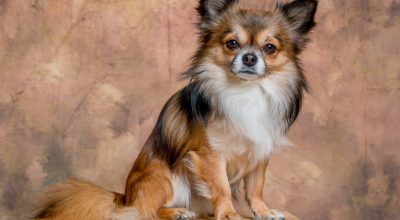Why Does My Chihuahua Growl When I Pet Him? Your dog is getting in touch whenever people come around, whether in public or simply while you’re sitting on the sofa. Almost all dogs enjoy those mild rubs and scratching, and your dog is most likely no exception.
However, when you touch him, he begins to growl, perhaps in an upset or nervous way. He demands to be left alone for a while. Next thing you know, he’s begging for affection all over again, and you wonder whether your dog is suffering from schizophrenia.
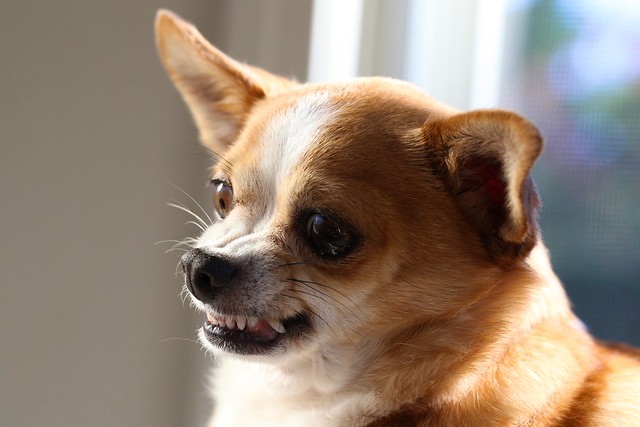
To choose the most effective training technique or management strategy. You must distinguish aggressive conduct from essential communication if the unexpected behavior has recently emerged or happens only sometimes.
So, what causes dogs to growl when they are petted?
It may be anything from loving pleasure growling to painful places or sensitive parts on your dog’s body to warning signs caused by fear-aggression or anxiety, among other things.
Why Does My Chihuahua Growl When I Pet Him?

Growling is often misunderstood to be a kind of simple angry vocalization. Traditionally, a growling dog is shown as a snarling, unpredictable, and possibly highly deadly creature.
Growling, on the other hand, is mainly a method of vocal communication between different species. The deep guttural, rumbling sound may seem to be frightening. It is just their method of communicating with you that they are “uncomfortable or endangered in this environment.”
Your dog growling is a positive thing since he is communicating with you that he is not happy with whatever you are doing. It is much more hazardous to have a dog who has learned that growling is terrible or who hasn’t had the opportunity to learn about canine communication during his reasonable period since he won’t warn you before he snaps.
But, apart from this, there are a variety of additional reasons for growling that you may not have considered. When your dog growls at you when you pet him, it does not always indicate that he is uncomfortable; in fact, it may mean the reverse.
1. Gasping for Pleasure
As previously said, growling is just a means of expressing one’s demands, whether excellent or unpleasant. When someone enjoys themselves, they may express their feelings via a deep, loving growl combined with a groan and might last for an extended time.
May compare it to a cat’s purr, which indicates that your dog is radiating pure joy and contentment when it does this. His gesture causes it clear that he is at ease. A dog enjoying petting will have a lowered tail, a relaxed posture, and an open mouth.
As soon as you stop, he may begin crying and pleading for more scratching. My Rottweiler has a strong need to express herself. She growls a lot whether she is playing tug of war or around other dogs.
However, just because your dog is vocalizing due to excitement does not rule out the possibility that he may growl in response to fear or wrath. Growling is still mainly use as a warning signal. Every dog has a distinct level of play or pleasure vocalization.
2. Medical Disorder

Pain or extreme suffering is often the cause of a rapid shift in behavior. In particular, while you are putting your fingers near an irritated eardrum or an injured paw.
Aggression may also be a sign of other medical disorders, such as hypothyroidism, among others. Having your dog thoroughly examined by a veterinarian may help to rule out any underlying illnesses and make your training sessions safe.
3. Particularly Sensitive Areas
All dogs like to have their preferred part of their body scratched, whether their owner’s belly, back or chest. Having their heads petted or their muzzles, ears, and paws rubbed is not something many dogs like. Mainly if it wasn’t part of their socialization training.
You may attempt to get your dog to accept being touched in those particular areas by desensitizing him to it. Regular examinations of the mouth and ears by veterinarians are required. Groomers must be able to grasp your dog’s paw while cutting his nails.
What to do?
You may work on your dog’s paws by simply teaching him the trick “shake,” which naturally includes his paws being stroked without him even realizing what is happening.
It is fine to use a large number of rewards while working on desensitization; however, you must be cautious not to promote undesirable behavior, which includes withdrawing the treat when your dog begins snarling.
Getting your dog more used to pats also requires you to understand how to rub your dog’s back and neck properly.
4. Intimidation towards some people/strangers
When it comes to preferences, dogs and humans are not all that unlike. Anyone would take back if they were suddenly embrace by a stranger or slapped in the buttocks. In general, some dogs are apprehensive of strangers, while some are particularly sensitive to specific kinds of persons or clothing.

If your dog wasn’t adequately expose to tall guys in black coats throughout his early developing phases. He might acquire a solid aversion to them in later stages of growth. Immediately, if this intruder chooses to approach, warning bells will go out.
The subject will meet every effort at physical contact with a quiet, growly, and unequivocal “no.” Confident dogs do not enjoy having their personal space invaded. Particularly human-oriented breeds which form strong bonds with their owners but are less satisfied with strangers in general.
A well-behaved and socialized dog should not view anybody as a danger when you, as the leader. Present the person as a friendly visitor to the home. Many individuals, on the other hand, are just clueless about how to act.
The majority of people do not even inquire as to whether they may touch your dog; instead, they lean down with their whole body and push their sweaty hands on your dog’s head. When dogs are anxious or frightened. They may interpret this leaning down as a danger, especially when combined with quick physical contact.
What to do?
Your dog does not need to be snuggling with the rest of the world, but even a slight shift in his perspective can do wonders for him. Exposed him to places with small gatherings of people and gradually worked his way up to busy roads and thoroughfares
Follow these socializing stages and, with the use of rewards or toys. Help your DOG have a good experience with other people. Additionally, you may inquire of strangers about their willingness to toss a treat in front of your dog as they walk by.
Inform anyone who approaches your dog and wants to touch him on how to approach him properly. Instead of bending over the dog, they should come to the side, removing the danger from their body language and demeanor. A scratch beneath the chin is far better than a touch on the head.
People approaching your dog should bend down with a reward in their hand if your dog is still apprehensive about it. This will allow your dog to establish contact on his terms.
5. Warning Signal
Growling may appear out of nowhere and surprise you. However, there have likely been several other body signs shown by your dog previous to this. Depending on the circumstances, your dog may attempt to communicate with you by saying “enough” or “leave me alone.”
While growling is not always a negative thing in and of itself, understanding the cause can assist you in preventing or managing the issue more effectively in the future. After a few seconds of petting, your dog will most likely respond with an angry growl to let you know he has had enough of your attention.
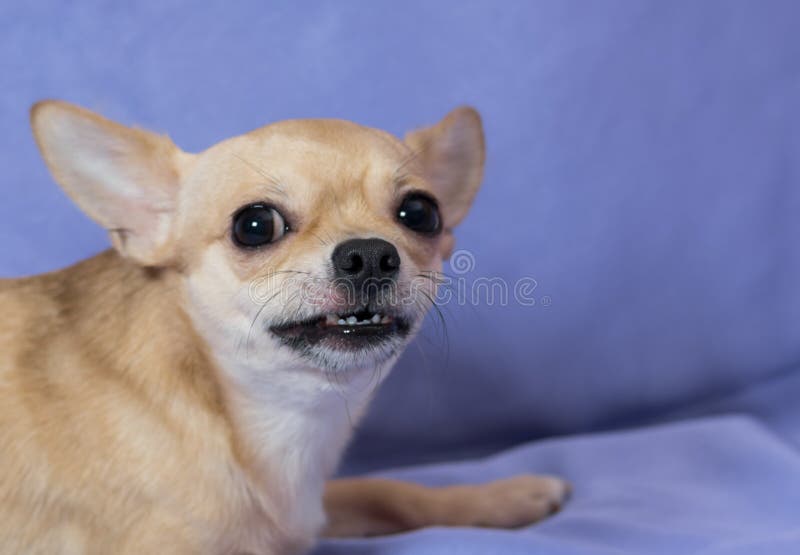
He certainly has the right to tell you that. Still, if he does so regularly, it may indicate that he thinks he is in command of the situation and that you are engaging in behavior that he finds objectionable.
In a nutshell, he is the one who directs your actions and gives you instructions on how to behave. I’ll go into more detail about the pack leader issue later down the page, which should give you a better knowledge of where your dog is coming from.
What to do?
Growling as a warning signal is not something that has to correct and shouldn’t be. As previously said, depriving your dog of the capacity to warn will result in a much more unpredictable dog.
Recognize what it is about this scenario that your dog is unhappy with. Is it possible you squeeze him too tight or that he is not in the mood, and you are pushing yourself on him?
Allow him some breathing room and allow him to approach you rather than the other way around. You may dangle a toy or a reward in front of them and engage in some one-on-one bonding time.
6. You Are Not the Alpha Male of the Pack
If so, your dog must be having problems in other areas and while petted. He believes that he is the boss and that he is in charge of the home. We understand that it seems to be humorous, but it is not.
Most of the time, tiny dogs are babies rather than large, dominating canines that control your life. I understand that every dog owner wants the best for their dog and wants them to be happy, but there are instances when you unintentionally create a problem for yourself.
But why is this an issue in the first place? Canines are group animals, and a pack that does not have a leader is confused, nervous, and unsteady in its behavior. If your dog perceives you as a poor leader, he will take matters into his own hands.
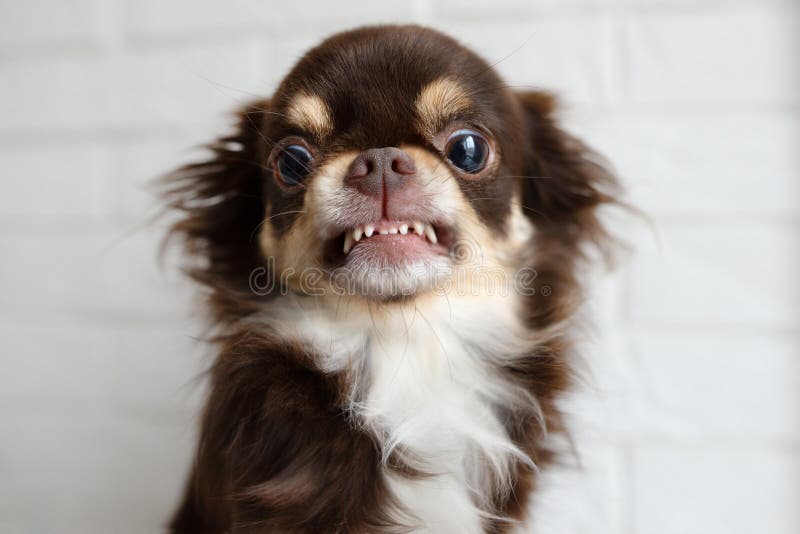
There has long been a talk over whether or not a pack hierarchy exists, and I will not delve into the specifics of that argument. Dogs are not like wolves, and domesticity has had a significant impact on their behavior. We do not advocate using any alpha training, which has unfortunately been strongly associate with the term “pack leader.”
In my experience, the family’s leader is a kind, kind, and well-respected member of the community. It is impossible to be more incorrect than to associate leadership with domination. Every species, regardless of whether it comes from a parent or a superior, needs direction.
Your dog will attempt to claim possession of resources or the sofa if he believes you are not deserving of this honor. He will no longer be require to follow instructions, and he may get irritate when he is reprimanded.
It’s basically about the notion that you must maintain control over your canine companion. They are animals, and our civilization is incapable of coexisting with their innate nature. That is, after all, why humans tamed wolves in the first place: to accommodate them into our lifestyles.
What to do?
Trust and respect should be the foundations of effective leadership. The essential foundation for any relationship is one built on mutual respect and understanding. You’ll need to be able to reveal efficiently and form the most robust possible connection.
If you think you might improve your relationship, don’t continue reading and instead use my complete bonding guide to make your relationship better. Therefore, both you and your dog will feel more confident, which will assist you in the following stages.
Read: Is it Tricky to Train a Chihuahua?
- Convey a sense of assurance. When talking to your dog, keep your voice calm and gentle, and treat him with respect. To receive support and love, you must first demonstrate your willingness to provide it

- When you give your dog an order, make sure he understands that you are serious. Avoid walking away when he doesn’t sit this time, assuming that it will work next time. When you ask for a command, it must always be adequately performe when you get it.
- Regular and regular obedience training will be very beneficial to your job. Make working with you a pleasurable and pleasant experience for your dog. An eagerly anticipated training session will result in a much higher success percentage for the canine trainee.
- Keep track of your dog’s daily walks, which should begin at your front entrance. Keep him from working out into the open area and instead demonstrate that he must respect your space and wait for your release order before running out into the available room.
- The same holds for off-leash enjoyment. Never let your dog off the leash until he has sat, look at you, and been released by you first. The release command is compelling, and it provides you with security and control over the length and consistency of any order you provide.
- In addition, he seizes control of his resources, mainly while they are under his protection. That means no free feeding and no stealing steaks off the table (which aren’t very tasty, to begin with). Mealtimes provide an excellent training opportunity to demonstrate to your dog that you have complete control over his food while also instilling trust in him that he is not required to defend it.
7. Anxiety
Dogs, like humans, may suffer from severe anxiety attacks at times. For example, a dog suffering from separation anxiety may display symptoms of severe discomfort when left alone for an extended period.
Shivering, pacing, panting, destructive activity, urine, drooling, excessive licking, and other anxiety-related behaviors. Fear, phobia, and anxiety are all distinct types of fear reactions to extreme stress, and each has its own set of causes.
Fear is a natural instinctive response that everyone has experienced at least once in their life. The fight or flight reaction is cause when we are confronted with a dangerous situation. Because of a loud commotion outside the door, it’s possible that your dog snarled when you were petting him during your pet session.

When dread persists over an extend period, it is referred to be a phobia. Your dog may acquire a fear as a result of previous trauma with people or as a result of a lack of socialization. The presence of exceptionally tall males in specific clothing may be frightening to dogs.
The terror reaction your dog will have every time he is exposed to that trigger will include barking, snarling, snapping, and lunging. Growling is nearly always self-satisfying since it accomplishes the intended result of a person walking away from the scene of the crime.
Another anxiety illness in dogs is a generalized anxiety disorder, characterized by a dog being constantly on edge and anticipating a danger around every turn. Petting him when he is frightening may really “injure” him.
A dog that is always frighten has extremely tight muscles with many knots, which causes them to become painful. While your goal may be to assist him, you may inadvertently make him feel more uncomfortable, resulting in a snarl on his part.
If your dog is going through a delicate phase, such as the second fear period (when he is between 6 and 14 months old), you must consistently desensitize him to his triggers.
What to do?
Socialization is a continuous process, and although you may have missed some of the most critical phases, it is still not too late. By consistently rewarding your dog with treats or toys, you may help him form a positive connection with his trigger.
Begin by holding a close eye on your dog’s surroundings and maintaining as much distance as possible. You may gradually increase the amount of exposure your dog receives in small increments to set him up for success. It is essential to remind yourself not to touch your dog while exhibiting an anxious reaction since it will encourage the behavior.
8. Unstable Behaviour
When a dog is confident, reliable, and stable, it is the exact opposite of being dangerous; nevertheless, when a dog is out of balance, it may feel a great deal of fear and uncertainty, leading to behaviors such as excessive submission or dominance, as well as swinging between them.
He may be very anxious when exposed to new stimuli, and your contact may increase his degree of nervousness even more. It’s also possible that your dog has learned to keep people away from him by snarling at them to protect himself (conflict aggression).
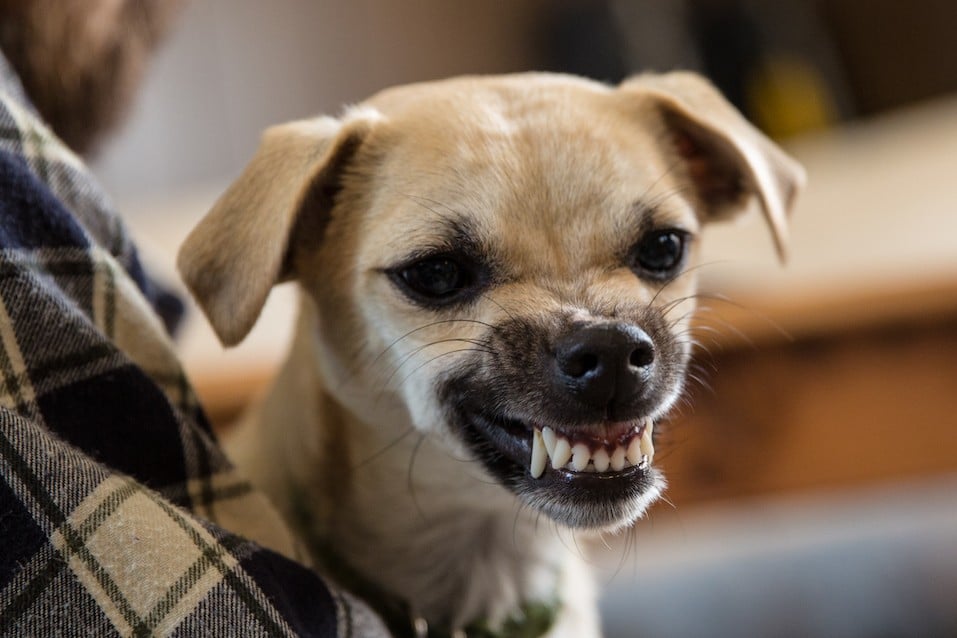
Additionally, this would include instances in which you are petted. Hassling a dog that is uncertain of itself may result in a hostile reaction from the dog. Unstable behavior is often the result of a medical problem. Therefore it is advisable to consult with your veterinarian about it.
However, as previously stated, an unbalanced temperament is inherent in all dogs and should be avoided at all costs when purchasing from a reputable breeder. There are a variety of temperament tests that you may administer to a prospective puppy to assess its level of maturity.
9. Arousal of hostility

Aggression (as opposed to medically induced aggression) is not something that occurs overnight. When a friendly dog turns into a possibly dangerous one, it takes time for the transition to occur. Probably many early signs that you might have picked up on may have indicated a bad shift had you paid attention to them.
Growling, snapping, and lunging at you or other people regularly indicates a severe behavioral issue.
Record the situations in which this behavior happens, as well as any possible causes for the conduct. It is essential to determine the source of the aggressiveness to formulate a strategy.
Profound hostility or reaction towards strangers is a problem that has to address immediately and thoroughly. There are many aggressive materials available on the internet, and you can always consult with a professional dog behaviorist for further assistance.
Frequently Asked Questions
Q: What is the source of my Chihuahua’s growling?
Your Chihuahua receives all he needs from you, and as a result, you are regard as a precious resource. Your focus should not divert by anybody else, and he regards other family members as competitors. Because of this, when they go close to you while he is on your lap, your Chihuahua growls to scare them away.
Q: What is causing my dog to snarl and snap at me all of a sudden?
The abrupt onset of growling, snapping, orbiting in a dog that has previously shown no signs of aggressiveness may result from sickness or illness. When it comes to dogs, pain is a constant source of hostility. 1 It’s possible that your suddenly violent dog is suffering from an injury or disease that is causing him significant pain and worry.
Q: What has caused my dog to snarl at me all of a sudden?
The abrupt onset of growling, snapping, orbiting in a dog that has previously shown no signs of aggressiveness may result from sickness or illness. When it comes to dogs, pain is a constant source of hostility. It’s possible that your suddenly violent dog is suffering from an injury or disease that is causing him significant pain and worry.
Q: What is it about chihuahuas that makes them growl often?
Chihuahuas have become bred to be associates with their owners since they were first domesticated. They are not naturally friendly dogs, and this is due to their nature. They must teach how to interact with others. Your Chihuahua maybe grumbles at you or others because he has to teach how to avoid engaging in this natural behavior.
Q: What has caused my Chihuahua to become hostile toward me suddenly?
Chihuahuas are adorable tiny dogs, but they are still canines, no matter how cute they are. Because of their small size, chihuahuas are liable to behave aggressively for the same reasons any dog may act aggressively: fear, territorial behavior, or the need to assert authority.
Final Words
While you’re trying to figure out what’s causing the growling, don’t ignore it since it will just become worse. Be cautious around your dog until you find out what’s causing it to snarl. Additionally, you may wish to assist your dog in changing its behavior until the issue has bring under control. Suppose your dog constantly barks at the postal delivery. Close the window curtains and block all sight lines while you try to figure out what’s wrong.
Preventing a dog bite and growling may accomplish by avoiding triggers. Avoiding stressful circumstances, and cautioning others including dogs and people to maintain their distance. For example, you may decide that you do not want to introduce your dog to new dogs, take it to a dog park, or host a loud party until you have gotten assistance.
Did you learn a lot? Let us know your thoughts below the comment section.
Curious Why do Chihuahuas Lick? We got you!
Here at ILoveChihuahua, we share our personal experiences as owners of this feisty breed. We talk about recommended methods, dog supplies picks, and advice on common Chihuahua problems. Our goal is to promote responsible dog ownership, so there would be fewer Chihuahuas in shelters.


